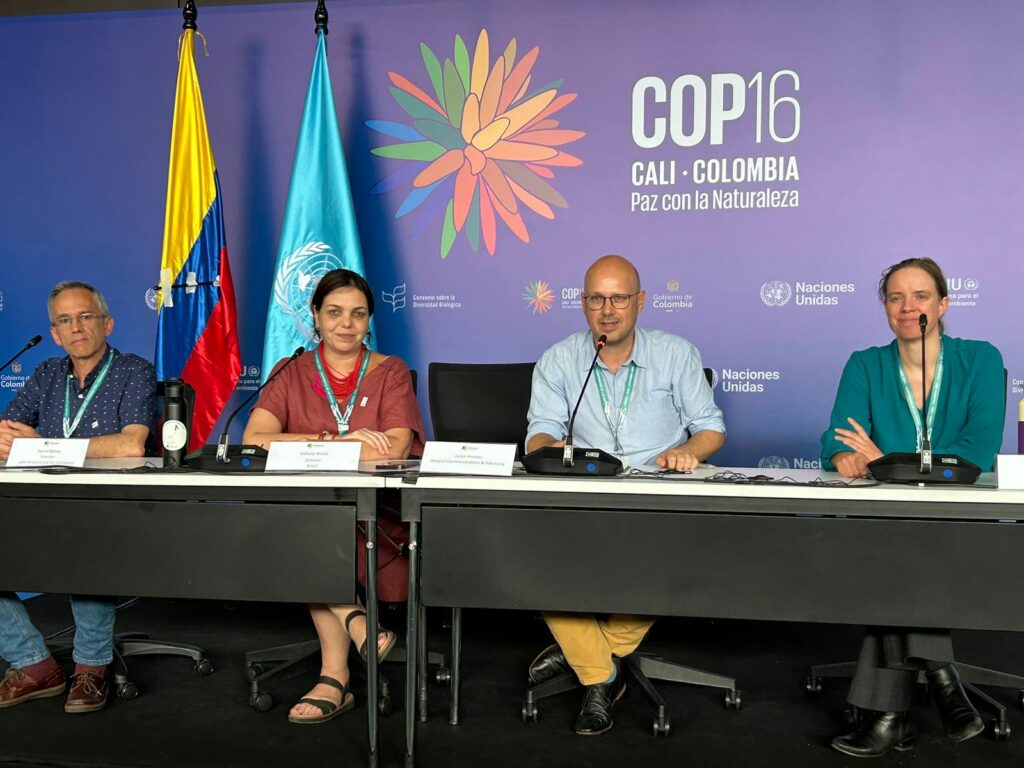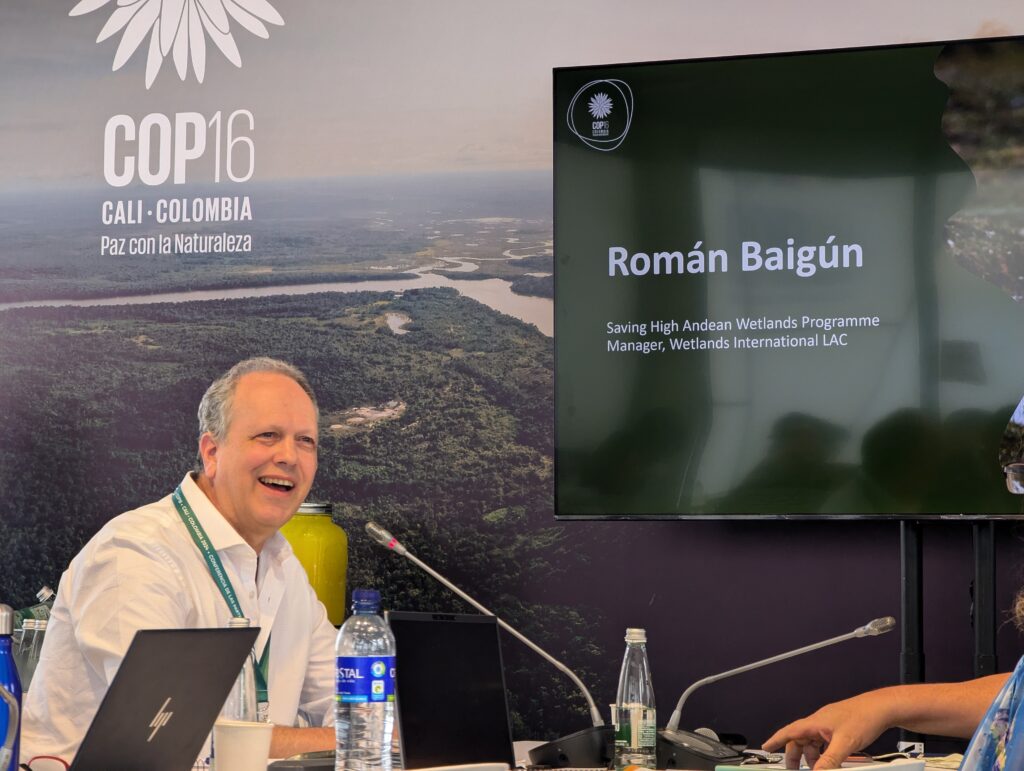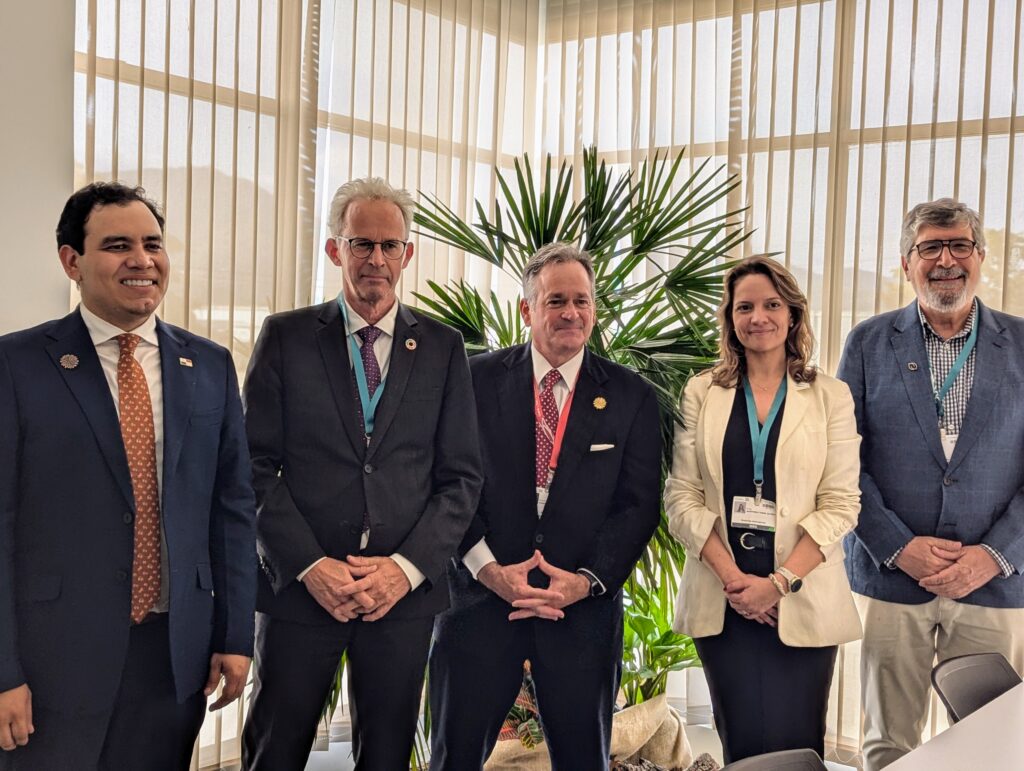
Wetlands in the spotlight at the UN Biodiversity COP16 in Cali, Colombia
COP16’s overall strong focus on water and wetlands illustrates an increased recognition of the critical importance of wetland ecosystems for the Global Biodiversity Framework’s successful implementation.
Among the negotiated outcomes, the adoption of a decision by Parties to align biodiversity and climate goals across the UNFCCC and Convention on Biological Diversity was particularly encouraging, helping to ensure cohesive action on these interconnected crises. During the negotiations, several countries advocated strongly for the role of water and wetlands to be at the heart of such efforts.
Other breakthroughs included an agreement to make companies share their profits from commercial discoveries derived from nature’s genetics to pay for global conservation efforts, and the decision to give Indigenous Peoples and local communities a permanent role in biodiversity decision-making.
However, overall, COP16 did not send a message to the world that all governments are acting with the urgency and determination needed to halt and reverse biodiversity loss. In particular, there is still a pressing need for more attention and action from countries on tackling the underlying drivers of wetland loss and degradation, including the need to eliminate subsidies that are harmful to nature and increase dedicated funding for wetland conservation and restoration.
Read our closing statement here.
Wetlands feature in most NBSAPs
As the conference kicked off in Cali, we held a press conference to mark the release of our new report which revealed promising data: wetlands feature in the majority of the new National Biodiversity Strategies and Action Plans (NBSAPs) submitted by countries before COP16.
Encouragingly, 83% of NBSAPs submitted by the time of Wetlands’ analysis explicitly mentioned the terms “wetlands”, “inland waters” or “freshwater” in their targets. However, while most Parties incorporated wetlands, mainly in targets 1 (spatial planning), 2 (restoration) and 3 (conservation), few comprehensively and specifically integrated wetlands throughout the targets and indicators, instead frequently using generic statements to cover all ecosystems without specific wetland targets.
“We urge countries who are still updating their NBSAPs to urgently release full and updated national plans, including wetlands as comprehensively as possible – and provide funds to deliver them. They can take inspiration from many of the NBSAPs published so far which focus specifically on wetland restoration and conservation and embrace the power of wetlands for meeting multiple other GBF targets including pollution, urban nature, climate action and finance,” said Femke Tonneijck, Director of Programme Impact at Wetlands International.

At our side event Watering NBSAPs: Incorporating wetland action into National Biodiversity Strategies and Action Plans for nature, people and climate, co-hosted with the Ramsar Convention on Wetlands, Birdlife International, WWF, The Nature Conservancy and the Global Youth Biodiversity Network, Femke Tonneijck emphasised the opportunity to include wetlands in Target 8 (Minimise the Impacts of Climate Change on Biodiversity and Build Resilience) because wetlands are superheroes for climate mitigation and adaptation, as well as Target 10 (Enhance Biodiversity and Sustainability in Agriculture, Aquaculture, Fisheries, and Forestry) to address the drivers of wetland loss.
We also heard from France, Zambia and Brazil on how they have incorporated, or plan to incorporate, wetlands in their NBSAPs. Brazil explained it is taking a holistic approach because wetlands connect land and sea, bringing landscapes together.
To help harness the power of wetlands to deliver the GBF, we encourage all countries to use guidance on incorporating wetlands into NBSAPs.
140 organisations call for bolder action for wetlands
During Forests and Water Day, more than 140 organisations and experts called on Heads of State and governments to take bolder action on water and wetlands in efforts to implement the GBF and in decisions to be adopted at the conference. In a joint letter — initiated by Wetlands International, WWF, WWT, IUCN, BirdLife International and the International Water Management Institute (IWMI) — seven priorities were proposed for governments to act on, including mobilising dedicated finance for wetland conservation and restoration, monitoring progress and tackling the drivers of wetland loss.
Wetlands are the superheroes of nature and home to 40% of the world’s biodiversity. Today we have an unmissable opportunity to restore and conserve mangroves, peatlands, rivers and lakes. We must also tackle the drivers of wetland loss. By stepping up collective action, together we can secure the future of the world’s water-related ecosystems.
Han de Groot, CEO of Wetlands International
Read our press release here.
Meanwhile, the side event Conservation and restoration of water-related ecosystems for peace with nature, part of Forests and Water Day, switched the focus to water, wetlands and peace. Our Director of Programme Impact, Femke Tonneijck, spoke about the myriad ways wetlands contribute to human wellbeing, including through mitigating against water-related conflicts in some of the world’s most fragile, volatile regions, such as the Inner Niger Delta in Mali. There, as part of the Water, Peace & Security initiative, inclusive & participatory stakeholder dialogue processes, founded on a scientific understanding of wetland flood dynamics, have led to agreements between previously competing wetland and water users, between fisherfolk, pastoralists and agriculturalists, to solve age-old disputes over water allocation and seasonal access to floodplains.
“Today is a reminder,” said Tonneijck, “that wetlands are connectors. From source to sea, along swimways and flyways, between people, across sectors, in the many countries joining the Freshwater Challenge and also connecting hearts and minds.”
Raising the alarm on the Pantanal
The Pantanal, in the heart of Latin America, is a giant seasonal floodplain and the world’s largest tropical wetland. The rivers overflow their banks, and many lakes, marshes and swamps are formed. It is one of the world’s most pristine areas and incredibly rich in biodiversity, with more than 4,700 animal and plant species finding shelter there.
Speaking at the side event co-hosted by Global Commons Alliance and Universidad de los Andes, From Science to Action: For a Just World on a Safe Planet at the Colombia Pavilion, Rafaela Nicola, Director of Wetlands International Brazil said: “The Pantanal is… a megadiverse place and the largest exporter of agro-industrial products in South America. But the Pantanal is above all a connector, connecting the Amazon, the Atlantic Forest, the Cerrado and the Paraná-Paraguay river, and straddling Brazil, Bolivia and Paraguay.
“The challenges in the Pantanal are increasing, we are breathing in smoke from the wildfires and living the impacts of drought. Maintaining the flood flows of the Paraná-Paraguay river system is key to maintaining the ecosystem services that generate life and maintaining the incredible biodiversity of the region.
“We must seek transboundary governance that puts wetlands at the centre of the discussion and combine science with traditional knowledge to seek creative, integrative, fair and inclusive solutions.”
The Pantanal is burning. It will face significant threats over the next 10 years, primarily due to deforestation, uncontrolled fires, and climate change. The Pantanal being on fire symbolises our broken relationship with nature. The time to act is now for people, climate, and biodiversity. Read our case study on the Pantanal here.
Protecting peatlands for biodiversity and climate
We hosted the only official side event for peatlands at COP16. Our CEO, Han de Groot, chaired this session by first reminding attendees of the importance of peatlands for biodiversity, climate, and water resilience. Gisela Habel, Deputy Head of the G7/G8/G20 Division of Germany’s Federal Ministry for Economic Cooperation and Development, then inspired the room with how her government is implementing paludiculture, or farming with high water tables, which is helping farmers keep their lands productive while restoring and protecting peatlands
Román Baigún from the Wetlands International LAC office then shared about our work in the High Andean wetlands. Lake Chinchaycocha in Peru is especially important as it houses endemic species like the Junin Grebe, a flightless bird. “We work hand-in-hand with the communities to ensure we are working together for the benefit of all involved,” he said.

Finally, Cinthia Soto Golcher, our Senior Climate Change Advocacy Officer, spelt out why a Peatlands Breakthrough – a global initiative to secure the future of peatlands by galvanising action and finance at scale – is so important and why we need a “whole-of-ecosystems approach” to restoring them.
More action and finance needed for mangroves
The International Coral Reef Initiative (ICRI) hosted its best-attended side event to discuss advancing marine conservation breakthroughs, opened by our CEO Han de Groot. He informed participants of two tools already available to help advance the Mangrove Breakthrough – a global initiative to secure the future of 15 millions hectares of mangrove by 2030. Global Mangrove Watch is an online platform that provides the remote sensing data and tools for monitoring mangroves, while these Best Practice Guidelines for Mangrove Restoration spell out how to effectively conserve and restore the ecosystems in a science-based, fair, and equitable way.
Meanwhile, Carlos Eduardo Correa Escaf, Former Colombian Minister of Environment and Sustainable Development, shared how 30 governments have now signed the Mangrove Breakthrough Declaration and how a financial roadmap now exists to support the inclusion of mangroves in Nationally Determined Contributions. The ICRI’s Tom Dallison pointed out that while the billions needed might seem like a lot, these ecosystems provide services worth trillions annually. So really, he said, the amount we need is a “drop in the ocean, pun intended.”
Panama joins Freshwater Challenge
Another stand-out moment for wetlands at COP16 was Panama joining the Freshwater Challenge, the world’s largest initiative to restore degraded rivers, lakes and wetlands and to protect vital freshwater ecosystems. A country-led scheme, it aims to restore 300,000 km of degraded rivers and 350 million hectares of degraded wetlands by 2030, while conserving intact freshwater ecosystems.
Commenting on the occasion, Juan Carlos Navarro, Panama’s Minister for the Environment, who was instrumental in signing the country up to the Challenge alongside Juan Monterrey, Special Envoy for Climate Change, said: “We must protect freshwater sources and wetlands immediately and if we don’t get this done right away, there will not be enough freshwater, not only for ecosystems and species and wildlife, but for us humans.”

Building with Nature offers a way forward in water infrastructure
The side event Upscaling Nature Based Solutions in Water Infrastructure: The Biodiversity Connection explored the integration of biodiversity into water infrastructure projects in rivers, deltas and coastal areas. Speakers included the head of our Deltas and Coasts programme, Pieter van Eijk, who cited our Building with Nature Indonesia project. “Building with nature puts biodiversity at the centre of water infrastructure design,” he explained during the event. “It works with nature, not against it. The potential to upscale is huge. Let’s take it to the next level so that building with nature becomes a core solution in GBF implementation.”
Beyond COP16
The adoption at COP16 of Parties’ decision to align action to deliver both climate and nature goals and maximise synergies across the UNFCCC and CBD will help prioritise and upscale action on wetlands as a critical connector of COP16, Convention on Wetlands COP15 in July 2025 and UNFCCC COP30 in November 2025. Looking ahead, there is much that countries and non-state actors can do immediately to make progress and ensure more ambitious and effective protection and restoration of wetland ecosystems and biodiversity.
More details on Wetlands International sessions at COP16 are available here.
Follow us on X here and LinkedIn here.
